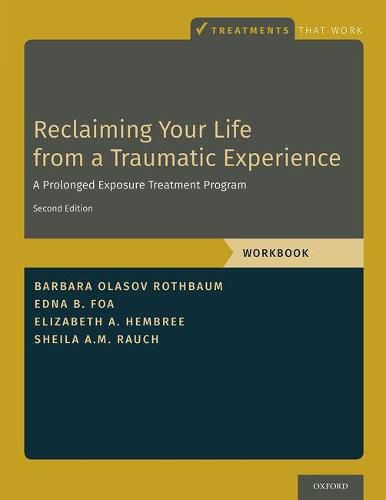Readings Newsletter
Become a Readings Member to make your shopping experience even easier.
Sign in or sign up for free!
You’re not far away from qualifying for FREE standard shipping within Australia
You’ve qualified for FREE standard shipping within Australia
The cart is loading…






Prolonged Exposure therapy is an effective, highly flexible, and very well-researched intervention to reduce the symptoms of PTSD across a variety of traumatized populations. The manual and companion patient workbook provide all the specifics of the PE protocol for providers to implement with efficacy and fidelity in order to maximize patient response. With the second edition, the authors have revised throughout to reflect the many advances in PTSD research that have occurred since the first edition. These advances include key modifications to the underlying theory, as well as additional evidence of modifications and individualization for more complex patient presentations and to military populations. As leaders in the clinical practice, training, and research in the field of PTSD treatment, the authors provide concise but thorough description of the key components of the program, how to implement them, as well as when and how to consider adaptations.
$9.00 standard shipping within Australia
FREE standard shipping within Australia for orders over $100.00
Express & International shipping calculated at checkout
Prolonged Exposure therapy is an effective, highly flexible, and very well-researched intervention to reduce the symptoms of PTSD across a variety of traumatized populations. The manual and companion patient workbook provide all the specifics of the PE protocol for providers to implement with efficacy and fidelity in order to maximize patient response. With the second edition, the authors have revised throughout to reflect the many advances in PTSD research that have occurred since the first edition. These advances include key modifications to the underlying theory, as well as additional evidence of modifications and individualization for more complex patient presentations and to military populations. As leaders in the clinical practice, training, and research in the field of PTSD treatment, the authors provide concise but thorough description of the key components of the program, how to implement them, as well as when and how to consider adaptations.